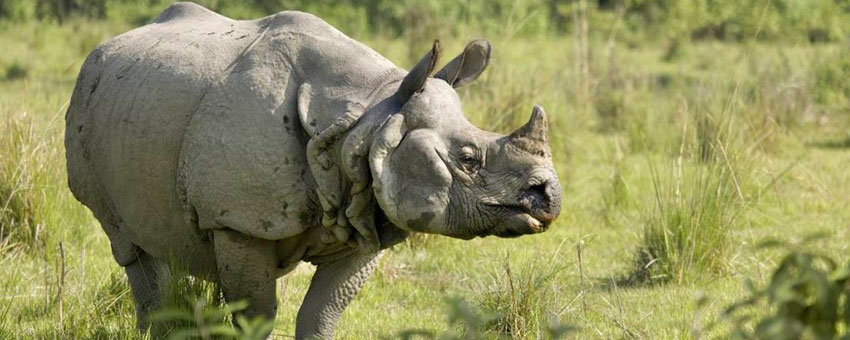Gorumara National Park: A Tapestry of Nature's Brilliance
Updated:- 27-Oct-23 Gorumara National Park is a jewel in the crown of West Bengal, India. Covering an area of 79 square kilometers, this national park is a sanctuary for biodiversity and a haven for nature enthusiasts. In this Gorumara nature blog, we will take you on a journey through this pristine wilderness, uncovering its unique features and the remarkable wildlife that calls it home.

1. Flora and Fauna:Gorumara National Park is celebrated for its rich and diverse range of flora and fauna. The park's landscape includes lush moist deciduous forests, savannah grasslands, and numerous riverine belts. Among its prominent residents are the captivating Indian one-horned rhinoceros, the enigmatic Royal Bengal tiger, and a vibrant array of avian wonders.
2. The Indian One-Horned Rhinoceros: Gorumara is home to the revered Indian one-horned rhinoceros, a massive creature that can weigh up to 2,300 kilograms. These gentle giants thrive in the park's grasslands and moist forests, and the conservation efforts have led to an increase in their population.
3. The Royal Bengal Tiger: The park is also a sanctuary for the Royal Bengal tiger, known for its elusive nature. Although tigers are often difficult to spot, Gorumara offers a chance to glimpse these regal cats in their natural habitat, making it a significant attraction for wildlife enthusiasts.
4. Avian Paradise: Gorumara National Park is a paradise for birdwatchers, with over 220 species of birds. Some of the highlights include the Indian pied hornbill, red junglefowl, and the great Indian hornbill. The park's diverse avian population and lush green surroundings provide ample opportunities for birdwatching.
5. Exploring the Park: To explore the wonders of Gorumara, visitors can partake in thrilling jeep safaris and guided nature walks. The dense forests and open grasslands offer excellent opportunities for wildlife and bird sightings. Early morning and late afternoon safaris are recommended for a higher likelihood of animal encounters.
6. Rivers and Streams: Gorumara is crisscrossed by the Murti and Jaldhaka Rivers, creating picturesque landscapes and providing a lifeline to the park's inhabitants. The riverbanks and waterholes are the ideal spots for observing wildlife, especially during the dry season when animals gather near the water sources.
7. Local Villages and Communities: The park is encircled by charming villages inhabited by indigenous communities. A visit to these villages offers an opportunity to witness the harmonious coexistence of people and wildlife. You can immerse yourself in the local culture and gain insight into the conservation efforts that aim to protect this pristine ecosystem.
8. Conservation Initiatives: Gorumara National Park stands as a symbol of successful wildlife conservation. Measures such as anti-poaching efforts, habitat restoration, and community participation have played a pivotal role in the preservation of this unique ecosystem. The park's conservation model serves as an inspiration for wildlife protection across the country.
9. Best Time to Visit: The ideal time to visit Gorumara Tour Packages is from October to June. The weather is pleasant, and wildlife sightings are at their peak during this period. For birdwatchers, winter months are particularly rewarding due to the arrival of migratory birds.
Conclusion: Gorumara National Park is a testament to the extraordinary biodiversity of India. It is a place where nature thrives, and humans have successfully embraced the need for coexistence. As you explore this natural wonder, you will be enchanted by the beauty and grandeur of the Eastern Himalayan wilderness.
So, pack your bags and embark on a journey to Gorumara National Park, where nature's brilliance unfolds in all its glory, and every moment is a testament to the harmony between humans and wildlife.